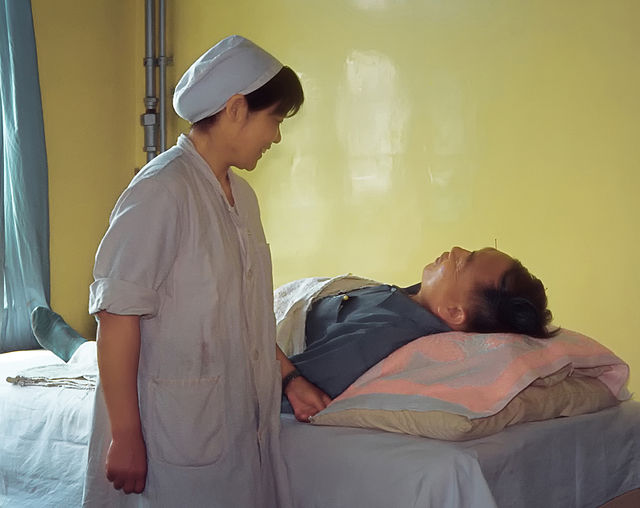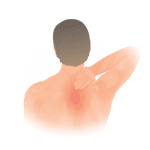In the realm of pain relief and treatment, two practices have gained significant popularity: dry needling and acupuncture. While they may seem similar on the surface, there are crucial differences between these two techniques. In this comprehensive guide, we will delve into the world of dry needling and acupuncture, exploring their techniques, benefits, and scientific basis. By understanding the distinctions, you can make an informed decision about which approach may be best suited to your needs.
What is Dry Needling?
Dry needling is a technique that involves the insertion of thin filiform needles into specific trigger points in the body. These trigger points are knots or tight bands of muscle that can cause pain and restricted movement. The goal of dry needling is to release these trigger points, providing relief and promoting natural healing.
Scientifically, dry needling is based on the concept of neurophysiology. When a needle is inserted into a trigger point, it stimulates nerve endings, creating a response in the muscular and nervous systems. This response can help relax muscles, decrease pain, and improve blood flow in the targeted area.
Dry needling has shown effectiveness in treating a wide range of conditions, including muscle pain, myofascial pain syndrome, fibromyalgia, sports injuries, and chronic pain. It is often used in conjunction with other physical therapy techniques to enhance the overall treatment outcomes.
What is Acupuncture?
Acupuncture is a traditional Chinese medicine practice that has been in existence for thousands of years. It is based on the concept of balancing the flow of energy, known as chi, through meridians in the body. According to acupuncture theory, when chi is blocked or imbalanced, it can result in pain and illness.
During an acupuncture session, thin needles are inserted into specific acupuncture points along the meridians to restore the flow of chi and promote overall well-being. These points may or may not correspond to the site of pain or discomfort.
Acupuncture has been widely recognized for its therapeutic effects and potential benefits. Beyond pain relief, it is believed to enhance the body’s natural healing abilities, improve circulation, and promote relaxation.

Key Differences Between Dry Needling and Acupuncture
While both dry needling and acupuncture involve the use of needles, their goals and principles differ significantly.
Dry needling primarily focuses on treating musculoskeletal pain and dysfunction by targeting trigger points. It aims to release tension, reduce pain, and restore normal muscle function. The treatment approach is based on Western anatomical and physiological principles.
In contrast, acupuncture addresses a wider range of conditions by focusing on the body’s energy flow and balancing chi. It is rooted in traditional Chinese medicine and is based on a holistic understanding of the body.
Technique-wise, dry needling typically uses thin, solid needles that are inserted directly into trigger points. In acupuncture, finer needles are inserted into specific acupuncture points along meridians, which may be located away from the site of pain.
Scientific evidence supporting the effectiveness of both dry needling and acupuncture has been growing. While more research has been conducted on acupuncture, recent studies have shown promising results for dry needling as well. However, it is important to note that the quality of research can vary, and further studies are needed to establish definitive conclusions.
Conditions and Indications
Dry needling has been found effective in treating various conditions such as myofascial pain syndrome, neck and back pain, headaches, temporomandibular joint (TMJ) dysfunction, and sports-related injuries. By targeting trigger points, it can help alleviate pain, improve muscle function, and promote overall recovery.
Acupuncture has shown positive results in treating conditions like chronic pain, osteoarthritis, migraines, anxiety, depression, and digestive disorders. The broad range of conditions that can be addressed with acupuncture highlights its holistic approach to healing.
In some cases, a combination of dry needling and acupuncture may be beneficial. For instance, if someone experiences both musculoskeletal pain and underlying imbalances in chi energy, a complementary treatment approach could provide comprehensive relief.

Safety and Side Effects
Both dry needling and acupuncture are generally considered safe when performed by trained practitioners. However, seeking treatment from qualified professionals who adhere to proper sterilization and safety protocols is crucial.
Side effects from dry needling and acupuncture are typically minimal. They may include temporary soreness, bruising, or bleeding at the needle insertion site. Serious complications are rare but can occur if proper precautions are not taken, such as puncturing vital organs or transmitting infections.
To minimize risks, it is essential to communicate openly with your practitioner about any pre-existing medical conditions, medications, or concerns you may have. They can provide appropriate guidance and ensure the treatment is tailored to your specific needs.
Choosing Between Dry Needling and Acupuncture
When deciding between dry needling and acupuncture, several factors come into play. Firstly, consider the nature of your condition. If you have musculoskeletal pain or a sports-related injury, dry needling may be more suitable. If you are seeking a holistic approach to overall wellness or have a condition that aligns with the principles of acupuncture, it may be worth exploring acupuncture.
Your personal preferences also matter. Some individuals may feel more comfortable with the Western medical approach of dry needling, while others resonate with the holistic philosophy of acupuncture.
Lastly, consider the expertise and qualifications of the practitioners available to you. Look for licensed professionals who have extensive training and experience in their respective fields. Don’t hesitate to ask questions and seek recommendations from trusted sources.
Conclusion
In summary, dry needling and acupuncture are distinct practices with unique goals, techniques, and treatment approaches. Dry needling focuses on musculoskeletal pain and trigger point release, while acupuncture aims to balance chi energy and promote overall well-being. By understanding the differences and considering your individual needs and preferences, you can make an informed decision when choosing between the two. Remember, consulting with healthcare professionals and qualified practitioners is crucial to ensure the most suitable treatment option for your specific condition.








